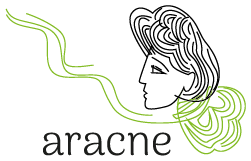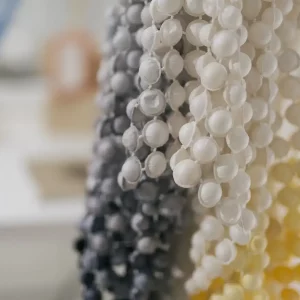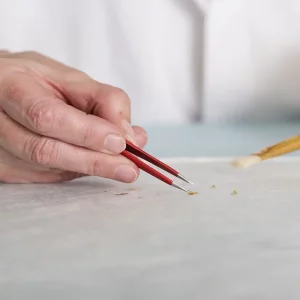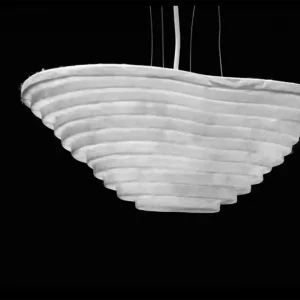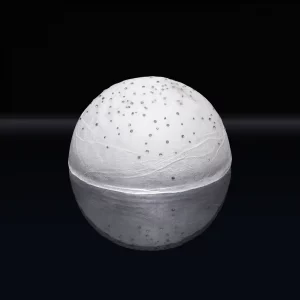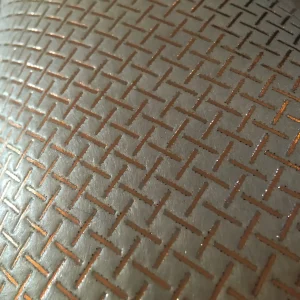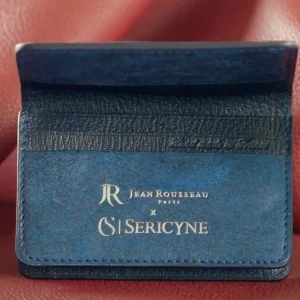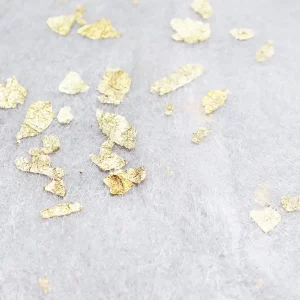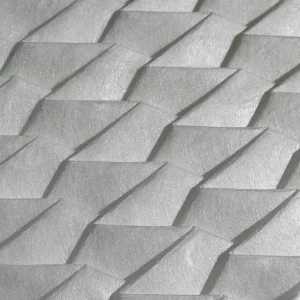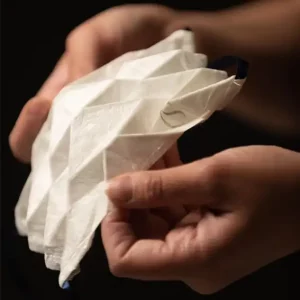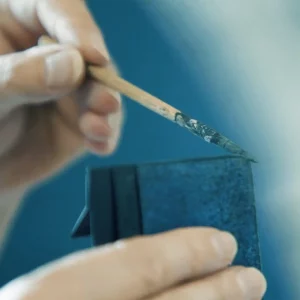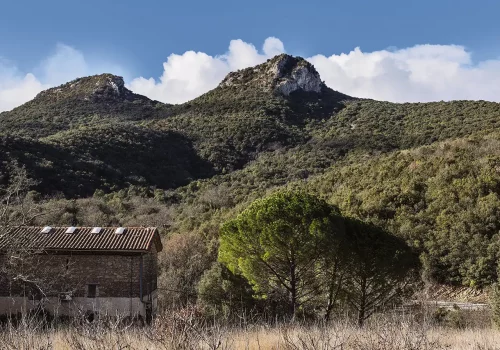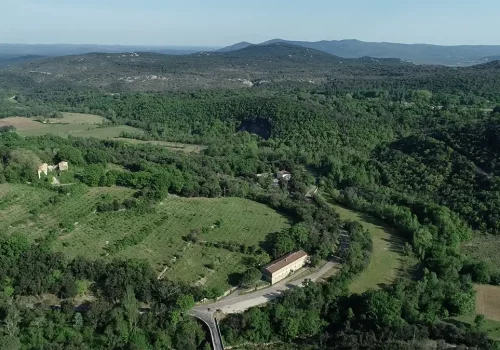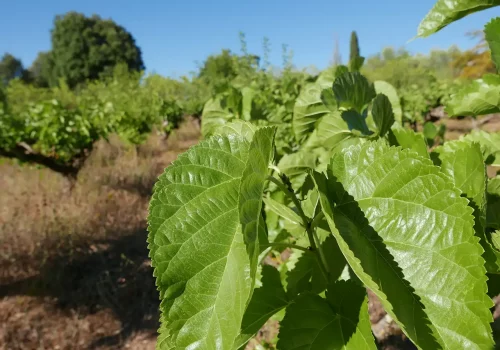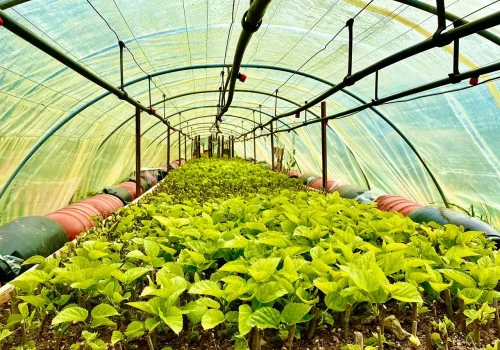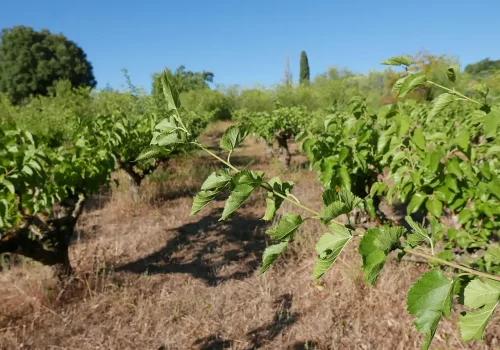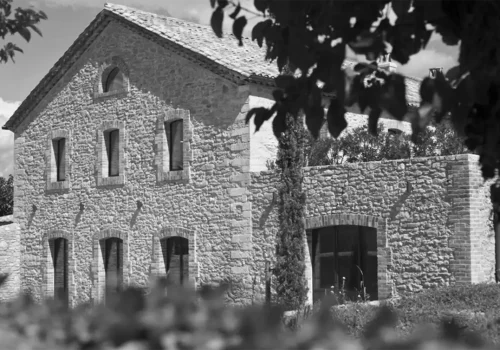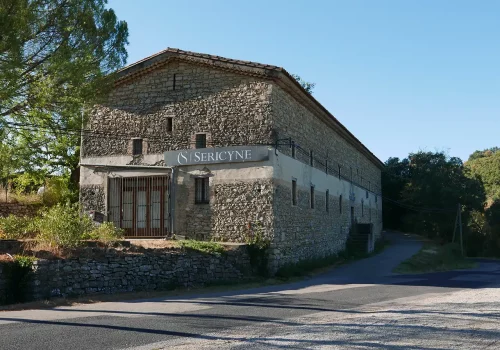Séricyne Atelier, the know-how
In 2015, Clara Hardy founded Séricyne, named after the protein, that covers silk filaments and allows them to stick together. She settled in Monoblet, a small village in the Cévennes, the first silk-producing region in France in the 19th century. She persuaded local farmers to revive silkworm rearing by planting white mulberry trees (Morus alba). The leaves of this tree, which originated in China and is still very much present in the region, are the only food for the larvae of the Bombyx mori moth.
At the design studio in Bagard, 20 kilometres from Monoblet, the natural silk sheets are transformed into unique objects and new materials. Some of these creations include silk labels for Martell cognac or Guerlain perfumes, embossed silk watch frames for jeweller Harry Winston, and poetic cocoon lamps by stylist Diane de Kergal.
More than a technological product, Clara's aim is to create a bio-industry by combining the world of craftsmanship with the world of nature.

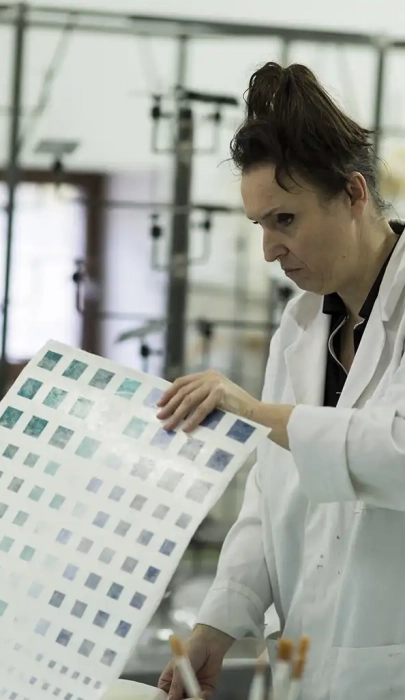
The Cévennes: Land of silk
In the 16th century, silk from Italy was a rare and expensive commodity. Inspired by the work of the agronomist Olivier de Serres, King Henri IV encouraged its production in his kingdom by granting bonuses and subsidies to farmers who began to rear silkworms. It was at this time that the cultivation of the white mulberry, the leaves of which are used to feed the larvae of Bombyx mori, became widespread in the Cévennes.
Farms dedicated to silkworm rearing developed almost everywhere in the region: Les Magnanerie.
Initially a family activity, it reached its peak in the mid-19th century with the creation of industrial reeling plants, before suddenly falling victim to a silkworm epidemic and then the arrival of synthetic fibres.
Séricyne is revitalising traditional agriculture and ensuring that its value is shared with its agricultural partners.
The company constantly trains its employees and farmers so that everyone is an expert in the field and has the best knowledge of silk production and processing. For example, those responsible for sericulture are trained by the most advanced experts in Europe and the rest of the world. The staff also promote biodiversity by practising organic farming, which avoids the use of pesticides on mulberry fields. Mulberry trees are also carbon-sequestering trees, helping to reduce greenhouse gases.

